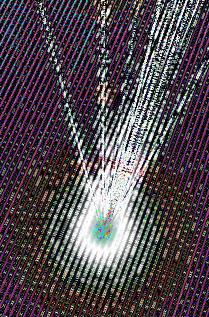Nano-boost for old imaging
 Australian scientists have discovered a new way to make the invisible visible.
Australian scientists have discovered a new way to make the invisible visible.
Research has unlocked a new method for analysing microscopic cells, tissues and other transparent specimens, through the improvement of an almost 100-year-old imaging technique.
The project used custom-designed nanomaterials to enhance the sensitivity of ‘phase contrast microscopy’; an imaging technique commonly used by scientists to study biological specimens.
The discovery allows scientists to detect minute changes in the composition or structure of transparent or nano-thin objects, enabling their key features and structures to be visible when put under a microscope.
“Features that were previously impossible to detect using conventional techniques can now be imaged using our microscopy method, developed by lead author and La Trobe Senior Research Fellow Dr Eugeniu Balaur,” says La Trobe Institute for Molecular Science (LIMS) physicist, Professor Brian Abbey.
“It has allowed our teams to delve deeper into the identification of early destructive processes in neurodegenerative diseases, such as multiple sclerosis,” Professor Abbey said.
Phase contrast microscopy, an optical technique that can produce high-contrast images of transparent specimens, was first invented in 1934 by Nobel-prize winning physicist Frits Zernike.
“This technique allows scientists to examine cells in their natural state without previously being stained or labelled. As a result, their structure and function – and perhaps even their dynamics – can be better understood,” Professor Abbey said.
“We now have the tools to manipulate matter at the nanoscale. Our custom designed nanomaterials have enabled us to achieve a huge leap forward in terms of image quality and contrast, building on the groundbreaking phase work of Zernike in the 1930s.”
La Trobe neuroscientist and study co-author Dr Jacqueline Orian says the goal now is to make the new microscopy technique available to scientists worldwide.
“A major application of the technique would be in the evaluation of candidate drugs for promotion of repair to nerves and their protective casings known as myelin,” Dr Orian says.
“The technique the team developed enables us to perform label-free imaging of cellular structures with exceptional contrast and in their natural state. Coupling nanotechnology with phase contrast microscopy lays the foundation for entirely new fields of research and represents a significant leap forward for the life sciences,” says Dr Nicholas Anthony, study co-author from the Istituto Italiano di Tecnologia (IIT).
More details are accessible here.







 Print
Print